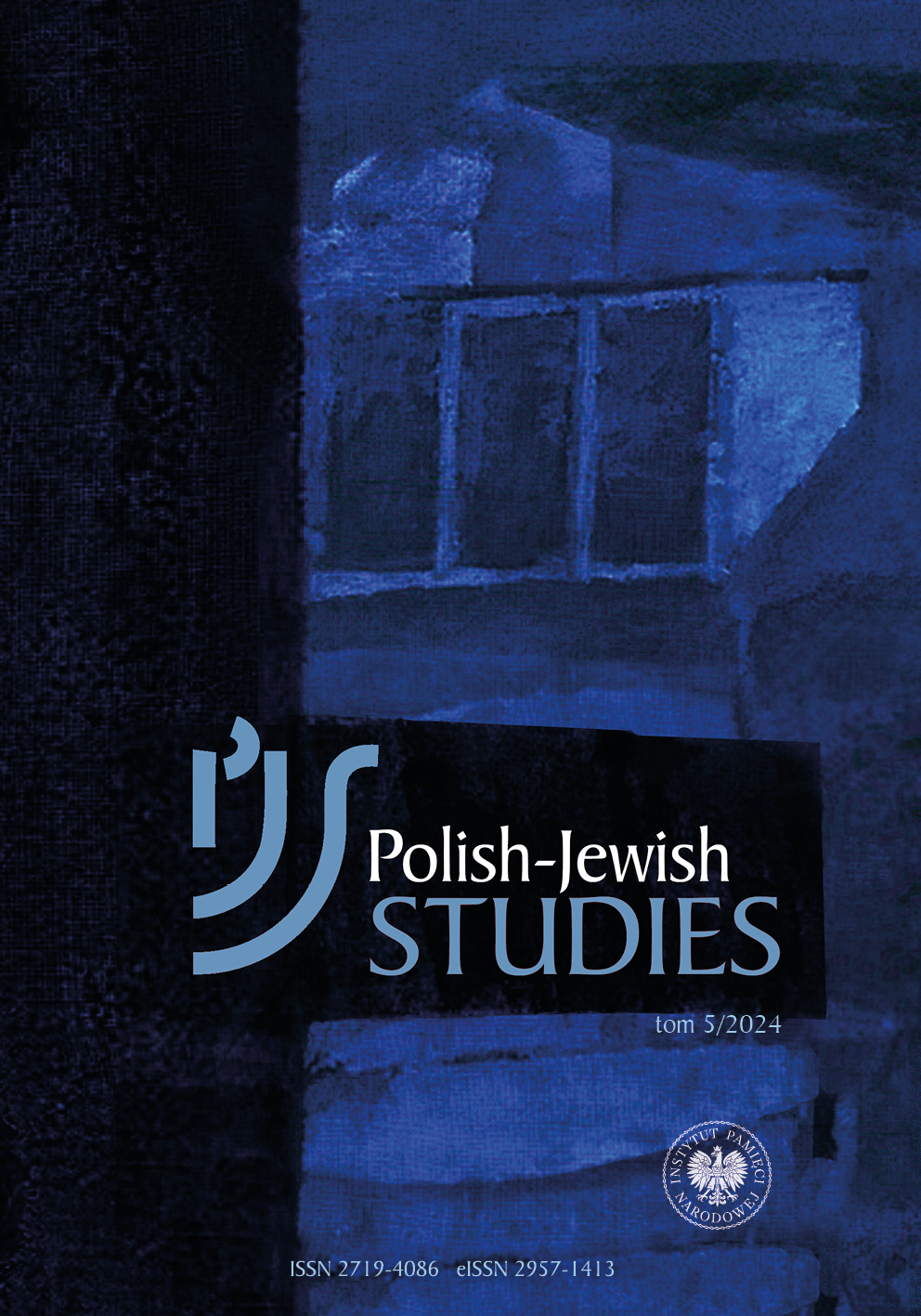No. 5 (2024)
Bilingual annual journal in English and Polish that discusses the Polish-Jewish relations and the history of the Jewish community in Poland in the 20th century. The aim is also to present national and local research and activity to preserve the memory of the Polish Jews. The journal is planned by its editors as a forum for the exchange of current research findings in Jewish studies for researchers from various scientific establishments.
The main theme of the fifth issue of the journal is the issue of aid provided to Jews during World War II, both in occupied Poland and in other areas of Europe. The “Studies” section contains texts on the consequences of providing aid to Jews in selected countries occupied by or collaborating with the German Reich, approaches and research models of the aid phenomenon, the psychological costs of hiding Jews, and various forms of aid activities. In addition, the reader will find articles on the life of Jews imprisoned in the ghettos and their survival strategies. We also encourage you to read the texts posted in the sections: “Sources”, “Reviews/Polemics” and “Chronicle”.
 Język Polski
Język Polski
 English
English
 Français (France)
Français (France)
 Italiano
Italiano
 Deutsch
Deutsch


 PDF
PDF
